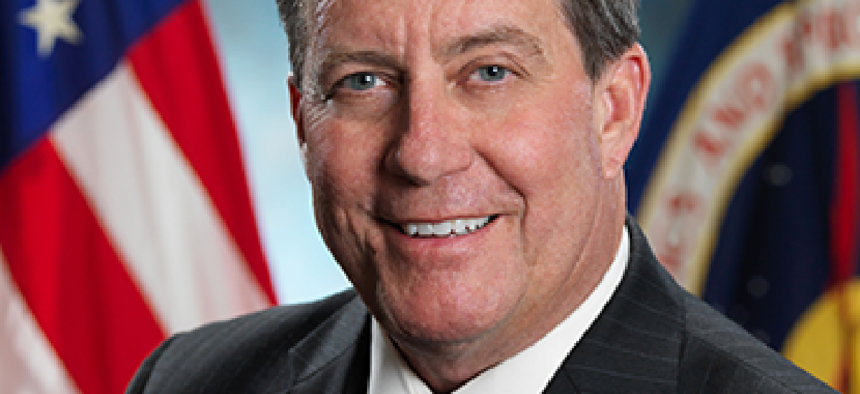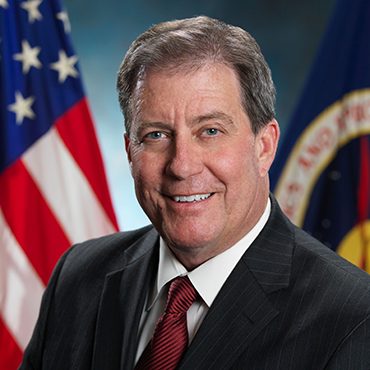New NASA CIO embraces job's challenges

An audit of the agency's IT governance sets at least part of the agenda for Larry Sweet's tenure.

NASA CIO Larry Sweet faces tough challenges as he lifts off in his new role.
Taking the helm as NASA's CIO is not rocket science – it might be harder.
On June 30, 26-year NASA veteran Larry Sweet officially replaced former NASA CIO Linda Cureton, inheriting one of the most challenging CIO gigs in the federal government. Sweet's appointment came after an exhaustive search that took longer than expected. Cureton left in April, but NASA had good reasons for not wanting to settle quickly on a CIO.
During its search process, with Associate Deputy Administrator Richard Keegan installed as acting CIO, NASA's Office of Inspector General began an audit of the agency's IT governance. The results, published in June, criticized NASA's decentralized approach and made eight major recommendations for whomever the agency selected as CIO.
With that knowledge in hand, the agency cast a wide net, seeking candidates who had demonstrated strong governance throughout their careers.
At the time, Sweet had been Johnson Space Center's CIO for six years, one of the longest-tenured CIOs in NASA's 10 centers across the country. Having overseen 100 civil servants and 500 contractors at JSC, the Houston-based home of the Space Shuttle and International Space Station programs, Sweet figured his lengthy background and expertise might at least put him on the short list.
His awareness of NASA's IT problems – the OIG sought his input during its audit – may have helped put him at the top of the heap. Now he and his wife, Cheryl, are looking for real estate in the Washington area – a challenge in itself, he added – and selling the family home in Houston, where they raised four children to adulthood.
"I applied knowing it would take somebody who understood NASA, the federal government and IT trends, and somebody who has managed a large organization," Sweet said. "There was nothing in the [IG] report I was surprised to hear about, and anybody in [this space] for more than three years would make the same comment. We – the CIOs and NASA headquarters – have been trying to improve IT governance for years. I'm very excited."
So is his predecessor.
"NASA made a great selection in picking Larry," said Cureton, now CEO of an IT consulting company she founded, Muse Technologies Inc. "I'm pleased, and it signals continuing collaboration among centers. It also signals continued improvements in enterprise service delivery."
Sweet's challenges are legion.
For starters, while NASA HQ is based in the nation's capital, its 10 centers are dispersed across the country, each with their own programs, objectives, cultures and funding profiles. In recent years, the NASA CIO has had the clout that comes with the title as the agency's IT chief in name only.
The IG audit puts a dollar sign in front of NASA's decentralized IT operations: Of approximately $1.5 billion allocated for IT spending in fiscal 2012, the agency CIO had direct control of $159 million. For every dollar spent by NASA on IT, its CIO had control of about a dime.
The IG audit estimated that NASA spent $400 million more than necessary on its IT budget in fiscal 2010 because of the lack of centralized decision-making.
"You have multiple programs across multiple centers, it's a complex environment from an IT perspective, and more complex to get your arms around the governance of IT spending," Sweet said. "I would say that most centers and center CIOs managing IT spend significantly better than what was done a few years ago, but I admit from an agency perspective, we have to do a better job."
As the new CIO, Sweet is charged with carrying out the recommendations made by the IG. Most come with a completion deadline of six months or less, so Sweet wasted little time getting started. He has already completed one: Instead of reporting to department administrators, the NASA CIO now reports directly to NASA Administrator Charles Bolden.
Other recommendations include having the CIO approve IT procurement expenditures over a certain threshold and consolidating IT governance within NASA's Office of the CIO. Each proposal requires Sweet to create a plan he'll have to adhere to. But the efforts are a clear signal that IT decision making is changing at NASA. Sweet will be the agency's first CIO with some semblance of full authority.
Sweet is aware his new position will put him in the public eye to a greater degree than he was at JSC – he'll be a sought-after speaker in the federal IT community like Cureton before him –but he said he plans to put work before any of the potentially distracting stuff.
"You have to find the right balance," Sweet said. "You don't meet challenges well by speaking out in the public for conferences."
And though his position isn't a political one, office politics within an agency the size of NASA are a given.
If NASA's IT Infrastructure Integration Program (I3P) – probably the most important current IT initiative at the agency – runs into problems in its second year, people will talk. It is designed to reduce agency costs through the consolidation and integration of NASA's IT contracts. Even after year one, Sweet said, some aspects are still "proving to be a challenge," but issues that arise have been taken on "very aggressively." At the same time, NASA's IT budget isn't likely to grow much. Sweet has worked in tight budget environments – he once faced a 12-percent cut at JSC– and he will actually have a smaller staff at NASA's D.C. headquarters than he had in Houston.
"The staff is smaller up here, but the responsibility is much bigger," he said.
Yet Sweet is genuinely excited to take on the challenges. After 26 years at NASA, and nearly a decade working as a contractor in the field prior to becoming a civil servant, getting the IT ship steadied at NASA may well be the toughest challenge he has faced in his career. But he's ready.
"I love this work, I'm excited about it, and I want to make the commitment to do this job well," Sweet said. "I want to stay here as long as I can – as long as NASA would like me to."
NEXT STORY: Building a senior executive pipeline



